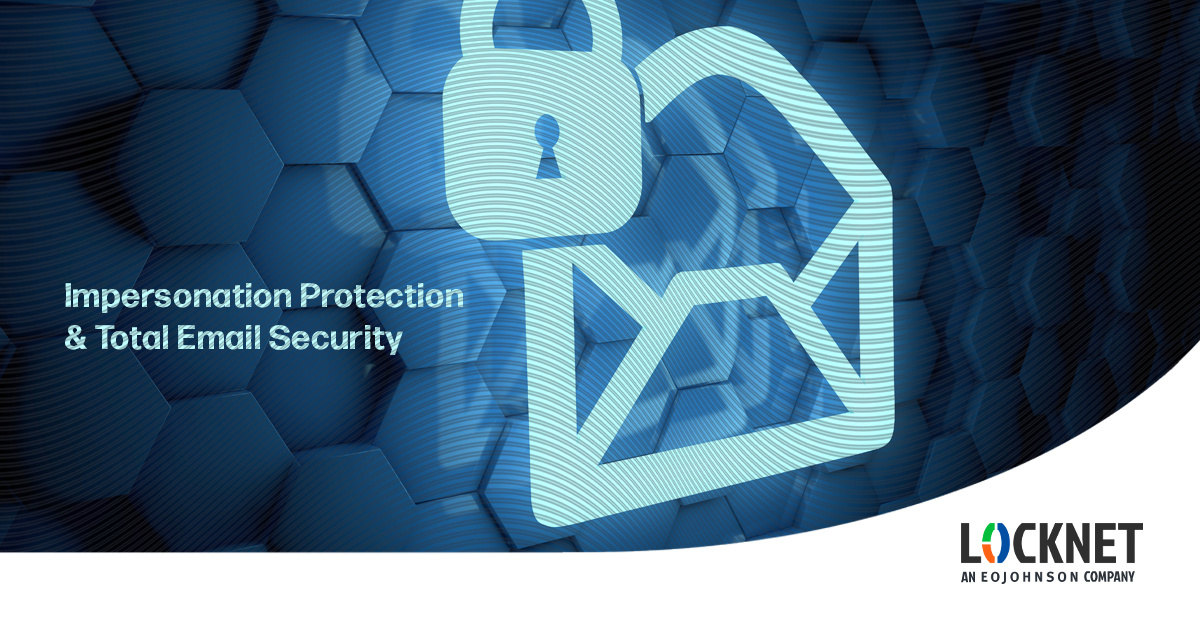Industries We Serve
World Class IT Support & Service
Real People. Right Now.
About Locknet® IT Services
From the first hello, the Locknet® team is dedicated to serving you and your needs.
Real People. Right Now.
From the first hello, the Locknet® team is dedicated to serving you and your needs.


Updated February 12, 2024
Social engineering threats have been increasing in their complexity and ability to evade traditional defenses. Email continues to be the single most common channel for targeting users into becoming victims of social engineering tactics. We take a closer look at email impersonation, providing you with the knowledge and tools to protect your inbox effectively.
Email impersonation, also known as email spoofing, is a malicious technique where cybercriminals forge the sender's identity to deceive the recipient. The goal is often to trick individuals or organizations into taking harmful actions, such as revealing sensitive information, transferring funds, or downloading malware.
Phishing remains one of the most prevalent forms of email impersonation. Cybercriminals send seemingly legitimate emails that mimic trustworthy sources, such as banks or popular online services. These emails typically contain urgent messages, prompting recipients to click on malicious links or provide confidential information.
In CEO fraud, attackers impersonate high-ranking executives within an organization to trick employees into performing actions that could result in financial losses. This might involve requesting wire transfers, releasing sensitive data, or initiating fraudulent transactions.
Cybercriminals often manipulate the email header information to make it appear as if the email is coming from a trusted domain. This technique is particularly effective because it tricks email filters and appears more legitimate to recipients.
In email spoofing, attackers forge the "From" address to make it look like the email is from a known and trusted source. This can be challenging to detect, as the email appears genuine at first glance.
Email impersonation scams can have severe consequences for your business. Businesses can suffer reputational damage and significant financial losses due to data breaches resulting from successful phishing attacks.
Phishing attacks often aim to trick recipients into providing sensitive information, such as login credentials or financial details. This can lead to unauthorized access to personal or corporate data.
Falling victim to email impersonation can tarnish an organization's reputation. Clients, partners, or colleagues may lose trust if they perceive a breach in security and integrity.
Business Email Compromise attacks can lead to substantial financial losses, as fraudulent transactions or unauthorized fund transfers take place under the guise of trusted executives.
Education is the first line of defense against email impersonation. Conduct regular training sessions to raise awareness about phishing tactics, email impersonation techniques, and the importance of verifying email sources.
Implementing multi-factor authentication adds an extra layer of security by requiring users to provide additional verification beyond just a password. This makes it more difficult for attackers to gain unauthorized access even if login credentials are compromised.
Ensure that email systems, antivirus software, and all other relevant applications are regularly updated with the latest security patches. Cybersecurity vulnerabilities in outdated software can be exploited by attackers.
Invest in advanced email filtering solutions that use artificial intelligence and machine learning to identify and block suspicious emails. These systems can analyze patterns, detect anomalies, and protect against various forms of email impersonation.
The team at Locknet Managed IT can help with all these security measures, including advanced email filtering with our new offering, Total Email Protection.
To combat email impersonation, Locknet has increased its security features through Total Email Protection. Locknet’s Total Email Protection includes the best defenses from our other security offerings like email security, advanced threat detection, archiving, and backup. Plus, Locknet’s Total Email Protection now includes impersonation protection and incident response.
Our impersonation protection combines artificial intelligence, deep integration with Microsoft 365, and brand protection into a comprehensive cloud-based solution that guards against business email compromise, whaling, impersonation attempts, CEO fraud, account takeover, spear phishing, and other cyber fraud.
Locknet’s Total Email Protection can automatically remove malicious emails from user inboxes even after the email is delivered to their inbox. It searches all delivered emails, creates incidents, and deletes emails from inboxes with just a few clicks, allowing our team to remediate threats within minutes, instead of hours or days. We have immediate insight into users who have interacted with, forwarded, or replied to malicious messages which allows us to contain threats faster.
The benefits of email impersonation protection
In addition to partnering with a Managed Security Service Provider (MSSP) to improve your security posture, encouraging vigilance in email communications within your employee base is key. Remind employees to remain alert when receiving unexpected emails, especially those requesting sensitive information or urgent requests.
By adopting a proactive approach that combines employee training, advanced security measures, and email filtering, organizations can significantly reduce the risk of falling victim to email impersonation attacks. Remember, staying informed and implementing robust cybersecurity practices are essential steps in fortifying your digital defenses against evolving threats.
Often, an organization’s first step to improving their security position is to partner with an MSSP to complete a security assessment. We can help your organization assess your current security gaps, outsmart these targeted attacks, and identify email impersonation attempts before they reach your users.
Cybersecurity

Onalaska, WI Waterloo, IA Wausau, WI Eau Claire, WI Burnsville, MN
You are now leaving locknetmanagedit.com. Please check the privacy policy of the site you are visiting.